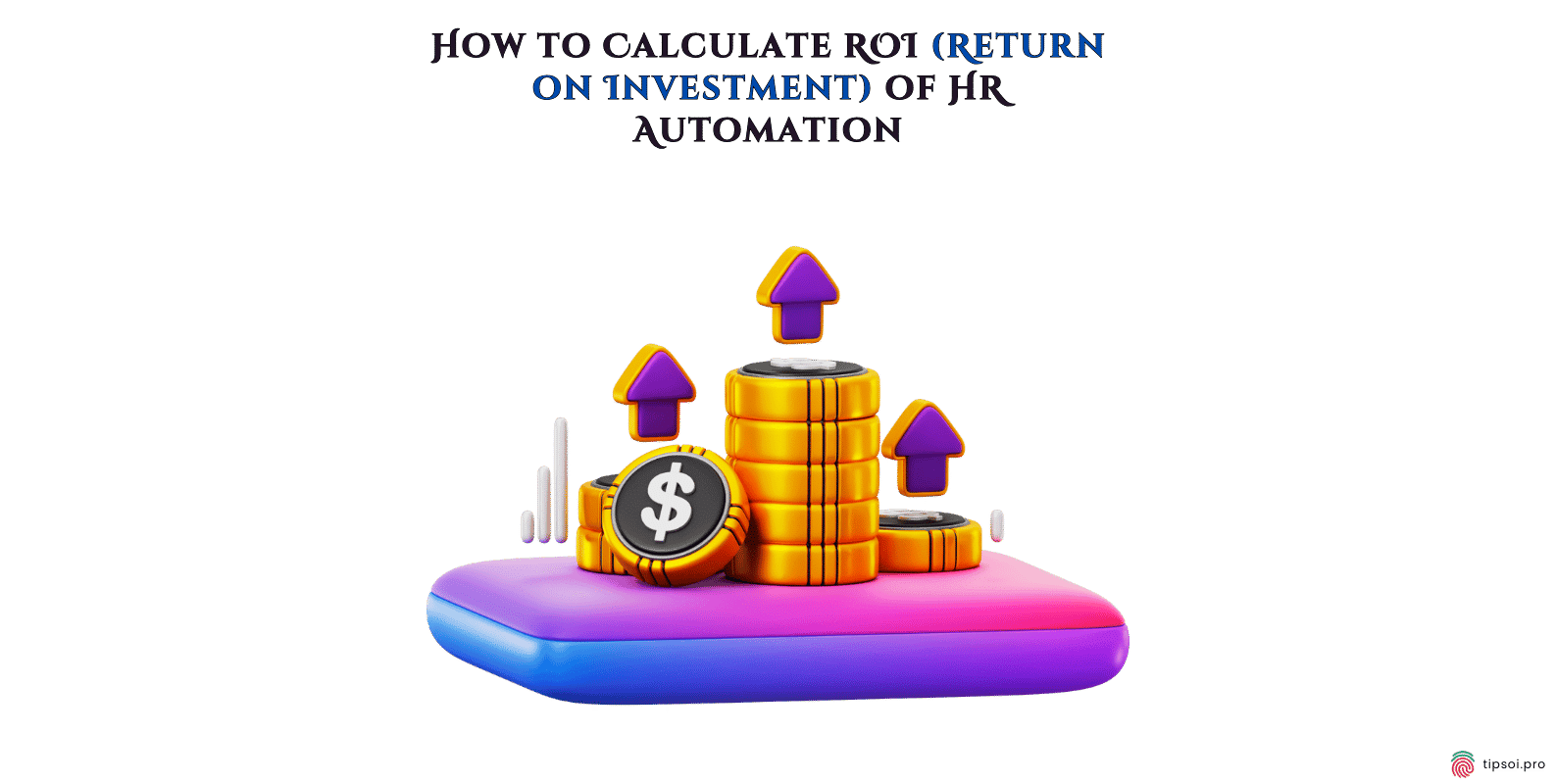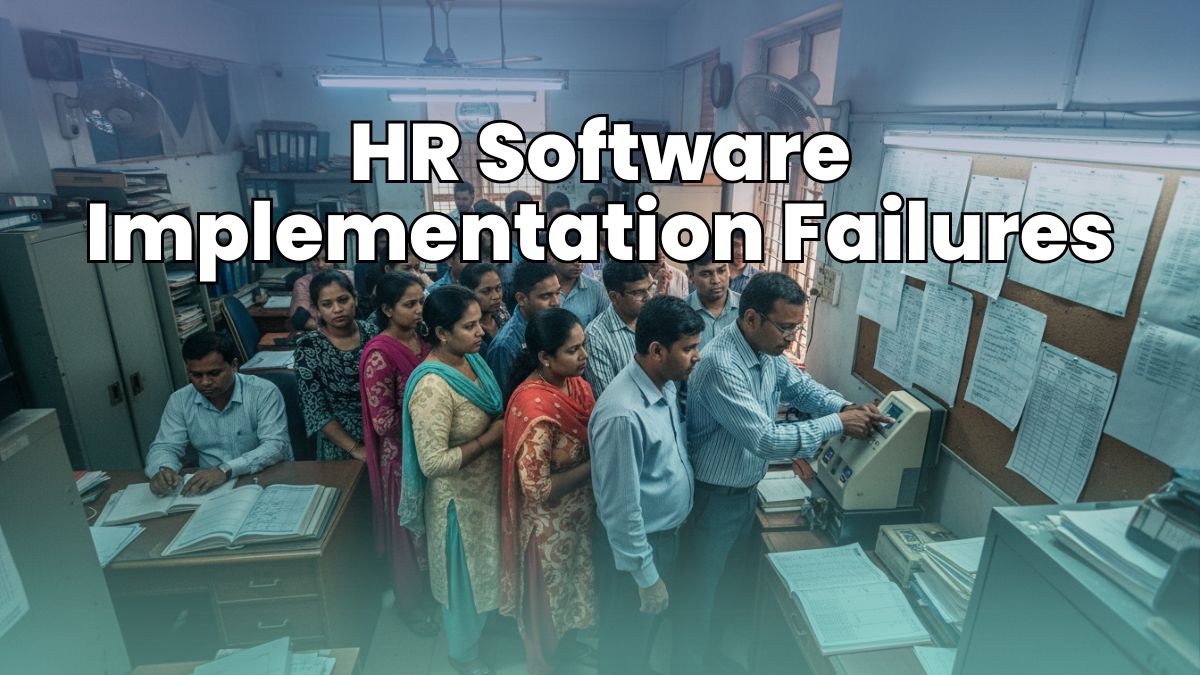Ever wonder if your HR team’s spending on fancy software is worth it? You’re not alone. Many companies in Bangladesh struggle to justify the cost of HR automation to their bosses. But here’s the thing – measuring the return on investment (ROI) of HR tech isn’t as tricky as it seems. Measuring the ROI of HR Automation is crucial for businesses to understand the true value of their investments in HR technology
Calculating the ROI of HR software can help you show the real value of your HR automation projects. It’s not just about saving money on paperwork. You’ll want to look at both the hard numbers and the softer benefits that aren’t as easy to put a price tag on.
Ready to prove that your HR tech is paying off? Let’s break down a simple way to measure ROI that’ll have your stakeholders nodding in agreement. You’ll learn how to add up the costs, tally the benefits, and make a clear case for why HR automation is a smart move for your company.
Key Takeaways
- Calculating the ROI of HR automation helps businesses make data-driven decisions about their HR investments.
- ROI calculation combines financial gains and less tangible benefits of HR automation
- Measuring time savings and improved efficiency are key factors in determining ROI
- Regular ROI assessment helps identify areas for improvement in HR software usage
Understanding ROI And Its Significance In HR
Accurately measuring the ROI of HR automation requires a careful analysis of both hard and soft costs. Return on Investment (ROI) is a key metric for HR departments. It helps you measure the success of your HR automation efforts and justify spending on new tools and processes.
Defining ROI And Its Calculation
ROI stands for Return on Investment. It’s a way to figure out if the money you spend on something is worth it. Measuring the ROI of HR automation is essential for demonstrating the value of HR initiatives to stakeholders.
To calculate HR ROI, use this formula:
ROI = (Net Benefits – Costs) / Costs * 100
Let’s break it down:
- Net Benefits: Money you gain or save
- Costs: How much you spend
- Multiply by 100 to get a percentage
For example, if you spend $10,000 on new HR software and it saves you $15,000: ROI = ($15,000 – $10,000) / $10,000 * 100 = 50%
This means you got back your initial investment plus 50% more.
Importance Of ROI In Demonstrating Value
ROI helps you show why HR automation is worth the money. It turns fuzzy benefits into clear numbers. This is super helpful when you’re trying to convince your boss or the finance team to invest in new HR tech.
With ROI, you can:
- Prove HR’s impact on the bottom line
- Compare different HR projects
- Show how HR helps the whole company
For instance, if you can show that a new training program increased revenue by $100,000 after costing $50,000, that’s a clear win. It makes it easier to get support for future HR initiatives.
Impact Of ROI On Decision-Making And Resource Allocation
ROI guides where you put your time and money in HR. It helps you pick the best projects and tools. With ROI data, you can:
- Choose between different HR tech options
- Decide which areas of HR need more investment
- Cut programs that aren’t working well
For example, if one HR system has a higher ROI than another, it’s probably the better choice. ROI also helps you optimize your use of HR platforms by showing which features give the most value.
Calculating The Hard Costs Of HR Automation
Figuring out the true cost of HR automation involves looking at both upfront and ongoing expenses. You’ll need to consider software, hardware, implementation, and maintenance costs to get the full picture.
Identifying Implementation And Maintenance Costs
When you’re calculating the ROI of HR software, start by listing all the costs involved. These include:
• Software licenses • Implementation fees • Training expenses • Hardware upgrades • Ongoing maintenance
Don’t forget about hidden costs like data migration or system customization. You might also need to budget for extra IT support during the rollout.
Consider the lifespan of the software. Will you need to pay for upgrades in a few years? Factor these future costs into your calculations.
Tips For Tracking And Documenting Costs
Keep detailed records of all expenses related to your HR automation project. This will help you get an accurate picture of your investment.
• Use a spreadsheet to track costs by category • Save all invoices and receipts • Document internal labor hours spent on the project
Set up a system to monitor ongoing costs. This could be a monthly report or a dashboard in your accounting software.
Ask your vendor for a breakdown of all fees upfront. This will help you avoid surprises later on.
Factoring In Time And Resource Requirements
Don’t overlook the time and effort your team will invest in the automation project. These “soft” costs can add up quickly.
• Estimate hours needed for planning and implementation • Account for productivity dips during the transition • Consider the time spent on training and change management
You might need to hire temporary staff or consultants to help with the rollout. Include these costs in your calculations.
Remember, your team’s time has value. Even if you’re not paying extra, their focus on this project means they’re not working on other tasks.
Measuring The Hard Benefits Of HR Automation
HR automation can save you money and boost your bottom line. Let’s look at some concrete ways to measure these benefits in Bangladesh and see real-world examples of the savings you can achieve.
Quantifiable Benefits In The Bangladesh Context
In Bangladesh, HR automation can cut your costs in several key areas. You’ll see big savings on labor as manual tasks become automated. Your recruitment spending will drop thanks to faster hiring. Payroll errors that could lead to fines will become rare. Quantifying the ROI of HR automation can be challenging, but it’s essential for understanding the full impact of HR technology.
You’ll also spend less on paper, printing, and storage. Employee productivity often jumps, leading to more revenue. To track these savings:
- Compare before and after labor hours for HR tasks
- Measure the decrease in time-to-hire
- Calculate paper and printing cost reductions
- Monitor changes in employee output
Keep an eye on these metrics over time to see your ROI grow.
Examples And Calculations Of Hard Benefits
Let’s crunch some numbers to see how the savings add up:
Labor costs: If automating saves 20 hours a week at 500 taka per hour, that’s 520,000 taka saved per year.
Recruitment: Cutting 5 days off each hire could save 2,500 taka per position in temp costs.
Paper reduction: Switching to digital could save 5,000 taka monthly on paper and printing.
Productivity: A 5% boost in output could mean 250,000 taka more revenue per employee yearly.
To calculate your total savings, add up all these areas. You might find you’re saving millions of taka through HR automation.
Assessing The Soft Benefits Of HR Automation
HR automation brings many benefits that aren’t easy to put a number on. These intangible gains can have a big impact on your company’s success and your employees’ happiness.
Importance Of Intangible Benefits
Soft benefits matter a lot for your business. They affect how your workers feel and perform. Happy employees tend to work harder and stay longer. This can save you money on hiring and training new people.
HR automation benefits go beyond just saving time and cash. It can make your whole workplace better. When HR tasks are smoother, everyone feels it. Your team might be more productive and enjoy their jobs more.
Don’t ignore these hard-to-measure perks. They can be just as valuable as the ones you can count.
Examples Of Soft Benefits In The Bangladesh Context
In Bangladesh, HR automation can bring some unique soft benefits. Let’s look at a few:
- Quicker responses: Your staff won’t have to wait as long for answers to their HR questions.
- Self-service options: Employees can handle simple tasks on their own, feeling more in control.
- Better rule-following: It’s easier to stick to local labor laws, keeping your company safe.
- Improved company image: A modern HR system can make you look good to job seekers.
These perks can make your team happier and more likely to stay. They might even tell their friends what a great place you are to work.
Methods For Measuring And Quantifying Soft Benefits
Measuring soft benefits isn’t always easy, but it’s worth trying. Here are some ways you can do it:
- Ask your employees: Use surveys to see how they feel about the new HR system.
- Check turnover rates: Are fewer people leaving since you automated HR?
- Time-to-fill: See if you’re filling job openings faster.
- Engagement scores: Look for improvements in how involved and happy your team is.
You can also track things like how often people use the new HR tools. If they’re using them a lot, that’s a good sign. Keep an eye on these numbers over time to see the real impact of your HR automation.
Calculating The Overall ROI Of HR Automation
Calculating the overall ROI of HR automation involves combining the analysis of hard and soft benefits. Figuring out the total value of HR automation involves looking at both money saved and other benefits. Here’s how to calculate it and why it matters for your company long-term.
Combining Hard And Soft Benefits
To get the full picture of HR automation’s value, you need to look at both hard and soft benefits. Hard benefits are easy to measure in dollars, like reduced paperwork costs. Soft benefits are trickier but still important, like happier employees.
Make a list of all the benefits you see. For hard benefits, put a dollar amount next to each one. For soft benefits, try to estimate their value. Maybe faster hiring saves you $5,000 per position. Better employee engagement might be worth $10,000 a year in productivity.
Add up all these numbers. This total represents the value HR automation brings to your company each year.
Step-By-Step Guide For Calculating ROI
- Figure out the total cost of HR automation
- Add up all the benefits (hard and soft)
- Use this formula: ROI = (Benefits – Costs) / Costs x 100
For example, if your HR software costs $50,000 and brings $150,000 in benefits:
ROI = ($150,000 – $50,000) / $50,000 x 100 = 200%
This means for every dollar you spend, you get two dollars back. Pretty good deal!
Remember to calculate ROI over time. The first year might have higher costs, but benefits often grow year after year.
Importance Of Clear Communication Of ROI
When you’ve crunched the numbers, it’s time to share them. Clear communication of ROI is key to getting buy-in from company leaders.
Use simple language and visuals. A chart showing costs vs. benefits over 5 years can be powerful. Highlight the most impressive numbers, like “We’ll save $100,000 in the first year alone.”
Connect ROI to company goals. If the CEO wants to grow the business, show how HR automation will help hire people faster. If they’re focused on cutting costs, emphasize the money saved on paperwork and reduced errors.
Be ready to answer questions. Know your data inside and out. Practice explaining it to someone who doesn’t know HR jargon.
Long-Term Value Of HR Automation
HR automation isn’t just about quick wins. Its value grows over time. As your team gets used to the new system, they’ll work even faster and smarter.
Think about future savings too. Maybe you won’t need to hire as many HR staff as the company grows. Or you could avoid fines by staying compliant more easily.
Consider how HR automation helps your company adapt. In a crisis, you can communicate with employees instantly. When you need to change direction, you can quickly see what skills your team has.
Don’t forget employee satisfaction. Happy employees stick around longer, saving you a ton on turnover costs. Plus, they do better work, making your whole company more successful.
FAQs
No, it doesn’t have to be. While it requires considering both hard and soft costs and benefits, a simple formula can provide valuable insights.
Hard benefits include cost savings from reduced labor, faster hiring, lower error rates, and decreased spending on paper and printing.
Soft benefits can be measured through employee surveys, turnover rates, time-to-fill metrics, and employee engagement scores.
Clear communication helps gain buy-in from stakeholders and justifies further investment in HR automation initiatives.
HR automation’s value extends beyond immediate savings, contributing to long-term efficiency, compliance, adaptability, and employee satisfaction.
Begin by identifying pain points in your current HR processes and researching solutions that address those challenges.
-
From Classrooms to Crop Fields – Tipsoi Makes History with First Agriculture Sector Deployment
We’ve always believed that smart technology can work anywhere – and now we’ve proven it! November 2025 marks a groundbreaking moment as Tipsoi officially enters Bangladesh’s agriculture sector with our first major agro client deployment in Panchagar district. This isn’t just another project; it’s proof that workforce management technology can thrive even in the challenging…
-
How to Implement Employee Time Tracking With Biometric Systems
Managing employee attendance accurately creates daily headaches for businesses. Paper timesheets get lost, buddy punching costs companies thousands, and manual data entry wastes hours each week. Biometric time tracking systems solve these problems by using unique physical characteristics like fingerprints or facial features to verify employee identity and record work hours automatically. This guide walks…
-
How Biometric Attendance Transforms Employee Management
Managing employees effectively is the backbone of any successful business. Yet, many Bangladeshi companies struggle with outdated attendance tracking methods that create problems instead of solving them. Traditional punch cards, manual registers, and spreadsheets are no longer enough for today’s fast-paced work environments. Biometric attendance systems have emerged as a game-changing solution that addresses these…









